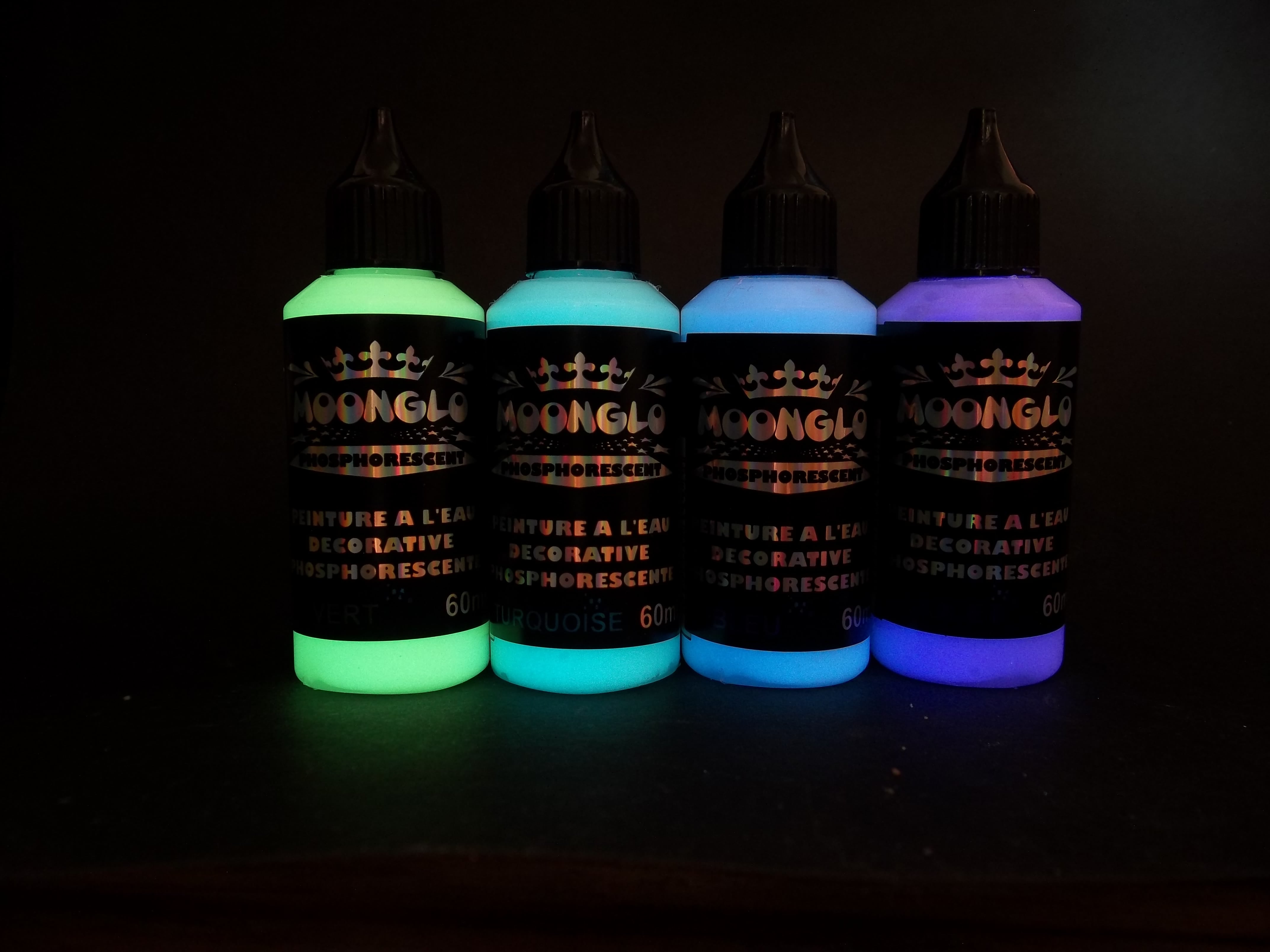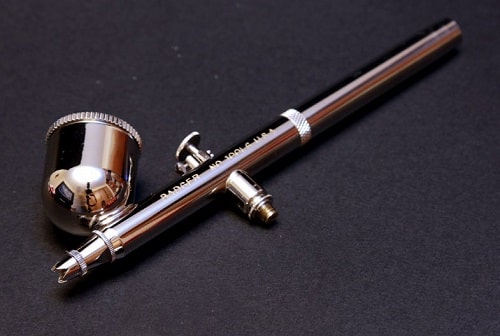 Phosphorescence with airbrushes
Phosphorescence with airbrushes
Airbrushing is an art, and it is also a sophisticated technique for applying paints and inks. Using with an "airbrush", the phosphorescent paint for decoration and creative hobbies is not so obvious, because it is necessary to adjust the phosphorescent paints and achieve a perfect fluidity so as not to clog the airbrushes. Nevertheless, it can give unrivaled results with all other application techniques. It is possible with the airbrush to create luminous patterns with phosphorescent gradient effects, drawings, lines, clouds, or stencils.
Apply this special effect with a brush and turn off the light after letting the paint set for a few minutes. You will then realize that in the dark, you can see all the brush marks in luminous green interspersed with black spots (lack of paint). This is why spraying is the only method that can give a homogeneous and regular result.
For large surfaces, it is preferable to use the spray gun, while for small objects or detailed drawing, we will favor the aero.
Which phosphorescent paint for an airbrush ?
This luminous liquid cannot be a liquid and transparent ink, because of the nature of the photoluminescent components: the formula of a paint of this type contains micro crystals, perfectly insoluble (these are not dyes). The “binder”, carrier liquid which contains these crystals must have a certain density and a thickness, to maintain all these pigments in suspension.
On the other hand, these pigments must be microscopic and ultra-fine so as not to "stuck" in the nozzle! And unfortunately, ultra-fine pigments for water-based paint formulas are very hard to find.
Yes, because when we talk about phosphorescent airbrush paint, we mean water-based paint. Well for this little problem of "suspension of thinner and lighter pigments" and this problem of incompatibility in water, it is difficult to manufacture phosphorescent paints or inks for airbrush. Yet this is the challenge taken up and succeeded by the Stardust team, which specializes in this type of special paint, with the creation of the first waterproof pigment with a size of 5-20 microns.
 Application tips for airbrushing
Application tips for airbrushing
Avoid over-dilution, as this really damages the properties of the dry paint, considerably lengthens the drying time and increases the "slippage" of the layers and the runs.
A golden tip: with a brush or when airbrushing, it is always better to apply more, thinner coats, rather than one or two thick, wet coats.
When applying the phosphorescent paint, it is possible to paint in the dark, using a UV lamp to "recharge" and see the paint.
Cleaning the airbrush after application
It's normal that you don't know that the pigments contained in the phosphorescent paint are micro-crystals harder than iron! In addition, they do not like contact with metals and tend to blacken and scratch them.
Don't worry, the phenomenon is very minimal! However, clean your airbrush immediately after use by rinsing it thoroughly with soap and water (for acrylic paints).



















































































